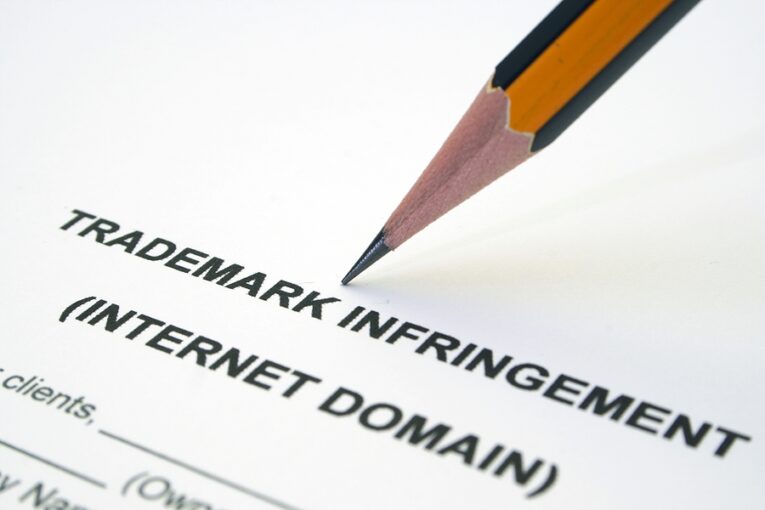Trademark infringement is a critical legal issue that can have significant consequences for businesses. When someone uses a trademark without permission, it undermines trust in the brand and causes consumer confusion.
What is trademark infringement?
The United States Patent and Trademark Office (USPTO) defines trademark infringement as the unauthorized use of a trademark or service mark on or in connection with goods and/or services in a manner that is likely to cause confusion, deception, or a mistake about the source of the goods and/or services.
Infringement can occur even if the mark is not identical. Any mark likely to cause confusion in the marketplace infringes on the rights of the prior senior user. Infringement applies to both registered and unregistered trademarks. Registration provides additional rights, but common-law trademarks also enjoy legal protection.
Remedies available to the trademark owner include injunctive relief, damages, and attorney’s fees. Litigation can be expensive, so most disputes settle out of court.
Key Legal Principles in Trademark Infringement
Several key legal principles form the basis for a trademark infringement claim:
Validity and Ownership
The plaintiff must prove it owns a valid, legally protectable trademark. This generally requires showing:
- The mark is distinctive; it identifies the source of goods or services and does not merely describe them.
- The mark is used in commerce as a source identifier in advertising and sales.
- The mark is registered (although common law rights may also apply).
Registration provides nationwide rights, while common law confers rights in the geographic area of actual use. With both types of rights, the fundamental issue is the likelihood of confusion.
Likelihood of Confusion
The core issue is whether the defendant’s use of a mark creates a likelihood of consumer confusion. The courts examine factors like:
- Similarity of the marks
- Proximity of the goods or services
- Strength of the plaintiff’s mark
- Evidence of actual confusion
- Defendant’s intent
A finding of likely confusion establishes infringement. Plaintiffs have the burden of proving the likelihood of confusion by a preponderance of the evidence. Defending parties often introduce survey evidence to rebut allegations of confusion.
Use in Commerce
The Lanham Act, which governs US trademark law, requires that infringing use affect interstate commerce. Most commercial uses meet this requirement, including online sales and advertising. Use limited strictly to intrastate commerce may not qualify as infringement.
Proving Trademark Infringement
In litigation, plaintiffs must put forth evidence supporting ownership, validity, likelihood of confusion, and commercial use. Common types of evidence include:
Ownership and Validity
- Registration certificate: Provides prima facie evidence of ownership and validity. Incontestable registrations offer conclusive evidence on certain issues.
- Specimens showing use: Examples of the mark used in advertising or sales help establish rights.
- Consumer surveys: survey evidence helps show acquired distinctiveness.
Likelihood of Confusion
- Similarity analysis: The plaintiff does a side-by-side comparison of the marks, evaluating elements like appearance, sound, meaning, and commercial impression.
- Consumer surveys: survey participants are exposed to the defendant’s use to assess actual confusion levels.
- Evidence of actual confusion: examples of phone calls, emails, or other documentation showing actual confusion in the marketplace.
Commercial Use
- Marketing materials: brochures, websites, and the defendant’s sales and advertising.
- Sales records—invoices and purchase orders—document the scale of infringing sales.
Meeting the burden of proof requires thoughtful evidence collection and trial preparation. Defendants also introduce significant evidence rebutting allegations.
Resolving Trademark Disputes
Trademark conflicts have several potential resolutions, including:
- USPTO proceedings: oppositions, cancellations, and appeals.
- Federal litigation: a lawsuit for infringement under the Lanham Act.
- Alternative dispute resolution: mediation or arbitration to settle out of court.
Understanding the options facilitates an informed resolution.
USPTO Proceedings
The USPTO provides a range of administrative proceedings to resolve disputes, including:
- Oppositions: challenge a pending trademark application on grounds like likelihood of confusion.
- Cancellations: Petition to cancel existing registrations that violate someone else’s rights.
- Appeals: Appeal a USPTO examiner’s substantive refusal to an application.
These proceedings tend to be faster and less expensive than those in federal court. However, available remedies are more limited compared to litigation.
Federal Litigation
Federal courts handle more extensive trademark conflicts. Lawsuit options under the Lanham Act include:
- Preliminary injunctions: freeze alleged infringement pending a full trial.
- Permanent injunctions are long-term court orders prohibiting infringing use.
- Damages: monetary compensation for losses suffered.
- Destruction orders: judicial orders to destroy infringing products.
Litigation is complex, so hiring counsel who specializes in trademark law is advisable. Most cases settle before trial to save time and expenses. Settlement terms often include permanently stopping the infringing use.
Alternative Dispute Resolution
Parties can confidentially resolve disputes through mediation assisted by a neutral third party or binding arbitration, where an arbitrator makes a final determination. These options avoid public litigation risk and help preserve business relationships.
Settlement terms might include:
- Trademark license agreement
- Restrictions on trademark use
- Monetary payments
Flexible solutions are negotiable to meet business needs outside of court.
Well-Known Trademark Infringement Cases
Several famous cases have shaped trademark law:
Nike, Inc. v. Nikepal Int’l, Inc.
Nike sued Nikepal over its use of a similar name and logo. The court found Nikepal infringed and caused confusion. Nikepal had to change its name and branding. This case shows strong brands defend zealously against freeriding.
Apple Inc. v. Samsung Electronics Co.
Apple sued Samsung for copying the iPhone/iPad design. The jury found smartphone design choices like rounded corners protectable and awarded $1 billion in damages. This decision indicates product configuration has trademark significance beyond just branding.
Christian Louboutin S.A. v. Yves Saint Laurent Am.
Louboutin sued YSL over its red lacquered shoe sole trademark. The court held Louboutin’s red sole trademark protected, except on monochrome red shoes. This was the first design trademark case heard by the US Supreme Court, highlighting the expanding scope of matters eligible for trademark registration.
These cases demonstrate that trademarks cover more than just names. Product design, user interfaces, packaging—all can function as source indicators eligible for legal protection. Vigorous enforcement protects brand equity and avoids consumer deception.
International Trademark Disputes
Global business means increased trademark conflicts across borders. Two examples are:
Budweiser vs. Budvar
The American company Anheuser-Busch and the Czech company Budejovicky Budvar battled over the Budweiser trademark for over 100 years across 80 countries. Courts ultimately upheld both parties’ trademark rights in different global regions, indicating shared use is sometimes unavoidable.
McDonald’s vs. Future Group
McDonald’s sued Indian company Future Group over the “Mc” prefix on food products. McDonald’s argued the prefix indicates McDonald’s affiliation. After a prolonged legal fight, the court ruled in McDonald’s favor, showing no tolerance for attempts to misappropriate goods.





